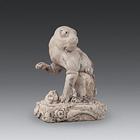Yuan Dynasty
General Introduction to Yuan Dynasty
 Since the late period of the 12th century, an ethnic minority group called Mongolian had grown up in the northern areas of China. In 1204, one of the leaders of the Mongolian tribes, Tiemuzhen, unified all the internal tribes. Two years later, Tiemuzhen was honored as Genghis Khan (meaning - the ruler of the world) and soon established the Mongolian Empire. Successively, it captured Xixia and the Jin Dynasty (1115 - 1234), after which the combative Mongolian army sent its military forces into Central Asia and Europe.
Since the late period of the 12th century, an ethnic minority group called Mongolian had grown up in the northern areas of China. In 1204, one of the leaders of the Mongolian tribes, Tiemuzhen, unified all the internal tribes. Two years later, Tiemuzhen was honored as Genghis Khan (meaning - the ruler of the world) and soon established the Mongolian Empire. Successively, it captured Xixia and the Jin Dynasty (1115 - 1234), after which the combative Mongolian army sent its military forces into Central Asia and Europe.
Although the dynasty was established by Kublai Khan, he had his grandfather Genghis Khan placed on the official record as the founder of the dynasty or Taizu. Kublai Khan had claimed the title of Great Khan, i.e. supremacy over the other Mongol khanates (Chagatai Khanate, Golden Horde, Ilkhanate); however this claim was only truly recognized by the Il-Khanids, who were nevertheless essentially self-governing. Although later emperors of the Yuan Dynasty were recognized by the three virtually independent western khanates as their nominal suzerains, they each continued their own separate developments. But the Mongol Empire as a whole remained strong and united. The Yuan is sometimes referred to as the Empire of the Great Khan. The Mongol Emperors of the Yuan held the title of Great Khan of all Mongol Khanates
Kublai Khan and Ariq Böke
In 1259 Great Khan Möngke died while Kublai Khan, his brother, was campaigning against the Song Dynasty in South China and Ariq Böke, his other brother, commanded the Mongol homelands. After Möngke's demise, Ariq Böke decided to attempt to make himself Great Khan. Hearing of this, Kublai aborted his Chinese expedition and had himself elected as Great Khan in an assembly with a small number of attendees in April of 1260. Still, Ariq Böke had his supporters and was elected as a rival Great Khan to Kublai at Karakorum, then the capital of Mongol Empire. The brothers then engaged in a series of battles, ending with Ariq Böke's capture in 1264. Kublai held him prisoner until he died two years later.
Founding of the Dynasty
From the beginning of his reign (1260), Kublai Khan had adopted many customs from earlier Chinese dynasties, such as era names and bureaucracy. After winning the war against Ariq Böke, Kublai Khan began his reign over his realm with greater aspirations and self-confidence — in 1266 he ordered the construction of his new capital at the site that is now the modern city of Beijing. The city had been called Zhongdu during the Jin Dynasty, and in 1272 it came to be known as Dadu ( in Chinese, Daidu to the Mongols, and Khanbalikh ("City of the Khans") to the Turks. In 1271 he established the Yuan Dynasty, which would proceed to be the first non-Han dynasty to rule all of China. Its official title, Da Yuan, originates from I Ching,. Yuan is the first dynasty in China to use Da in its official title. In 1272, Dadu officially became the capital of the Yuan Dynasty.
Rule of Kublai Khan
Unlike his predecessors, whose rule usually involved widespread plunder, Kublai Khan tried to warm to and seek support from the populace. Many reforms were made during Kublai Khan's reign. Kublai Khan began to serve as a true emperor, reforming much of China and its institutions, a process that would take decades to complete. For example, he consolidated his rule by centralizing the government of China — making himself (unlike his predecessors) an absolute monarch. He reformed many other governmental and economic institutions, especially the tax system. Kublai Khan sought to govern China through traditional institutions, and also recognized that in order to rule China he needed to employ Han Chinese advisers and officials, though he never relied totally on Chinese advisers
Early rulers after Kublai
Succession was a problem for the Yuan Dynasty, later causing much strife and internal struggle. This emerged as early as the end of Kublai's reign. Kublai originally named his eldest son, Zhenjin as the Crown Prince — but he died before Kublai in 1285. Thus, Zhenjin's son ruled as Temür Khan for approximately 10 years following Kublai's death (between 1294 and 1307). Temür Khan decided to maintain and continue much of the work begun by his grandfather. He also made peace with the western Mongol khanates as well as the neighboring countries such as Vietnam, which recognized his nominal suzerainty and paid tributes for a few decades. However, the corruption in the Yuan Dynasty began during the reign of Temür Khan.
Northern Yuan
The Yuan remnants retreated to Mongolia after the fall of Yingchang to the Ming in 1370, where the Yuan Dynasty was formally carried on. Under the name Northern Yuan the Mongols resisted the Ming. According to Chinese political orthodoxy, there could be only one legitimate dynasty whose rulers were blessed by Heaven to rule as Emperor of China (see Mandate of Heaven), and so the Ming and the Northern Yuan denied each other's legitimacy as emperors of China, although the Ming did consider the previous Yuan which it had succeeded a legitimate dynasty. Historians generally regard Míng Dynasty rulers as the legitimate emperors of China after the Yuan Dynasty, though Northern Yuan rulers also claimed this title.



 闽公网安备 35020302000788号
闽公网安备 35020302000788号